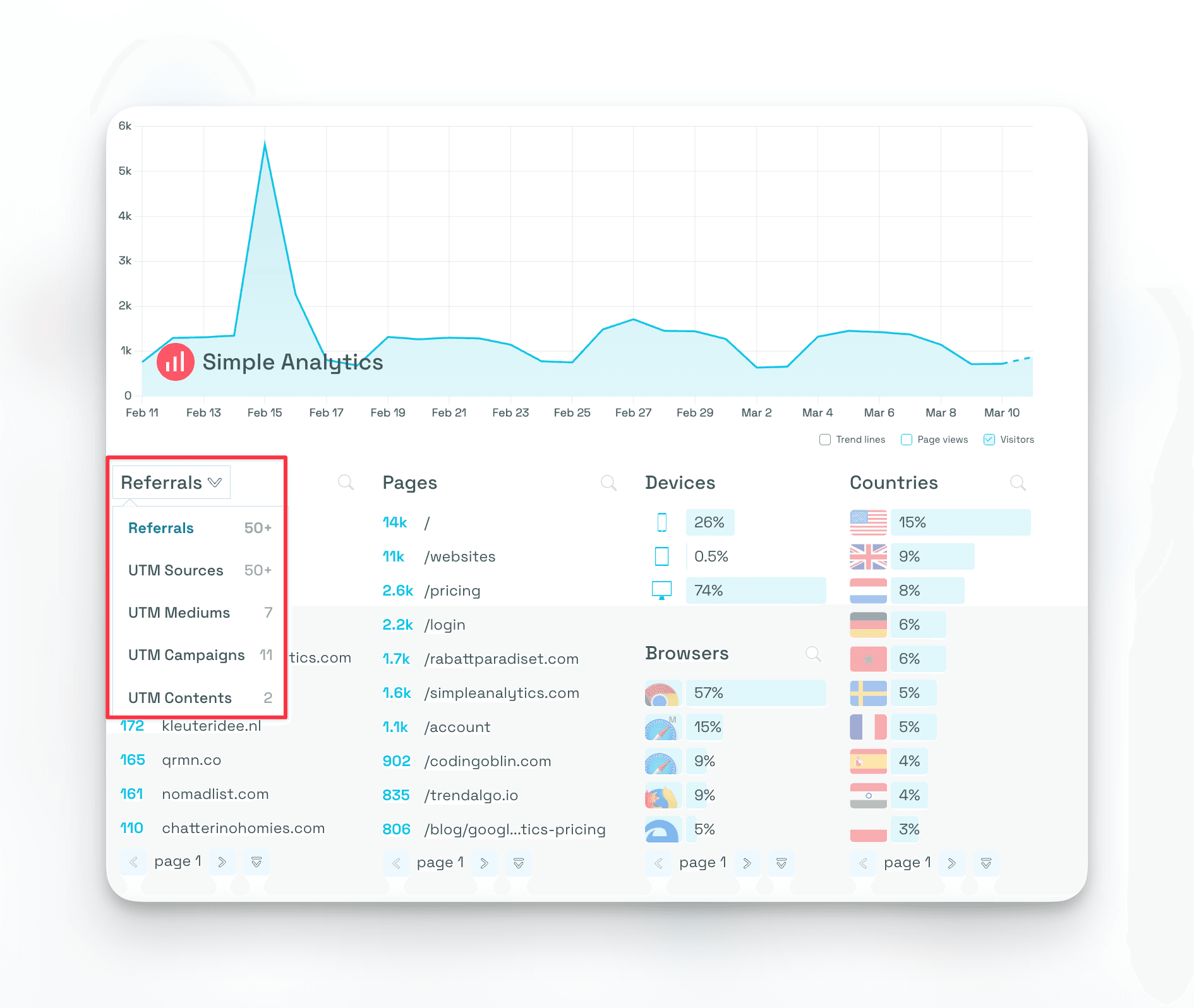UTM tracking can be confusing when you are new to Google Analytics. However its a really important feature that can give you more detailed insights in specific marketings campaigns, emails and newsletter editions.
Here is what UTM tracking is, what it is for, and how to implement it correctly.
Let's dive in!
- What is UTM tracking?
- What are UTM modules?
- How do I implement UTM tracking?
- How do I make the most of UTM tracking in Google Analytics?
- Final Thoughts
What is UTM tracking?
UTM parameters are snippets of text added to the end of a URL that tell web analytics tools like Google Analytics information about each link and where the traffic comes from. UTM tracking involves appending UTM (Urchin Tracking Module) parameters to URLs to track the effectiveness of online marketing campaigns across traffic sources and publishing media.
What are UTM modules?
As we explained, UTM parameters or modules are snippets of code at the end of a url. You can see them directly when you click some links.
For instance, a Facebook ad might direct you to the https://example.com/?utm_source=facebook&utm_medium=social&utm_campaign=summer_sale.
This url contains three UTM parameters that provide useful information for web analytics- the viewer reached the site from the summer sale campaign on Facebook.
The most common types of UTM parameters are:
- utm_source identifies the source of traffic, such as a search engine, newsletter, or other referring site. (e.g., Google, newsletter).
- utm_medium identifies the medium used to send the traffic (e.g., email, CPC, social).
- utm_campaign identifies a specific product promotion or strategic campaign (e.g., spring_sale).
- utm_term identifies search terms used by visitors in paid search campaigns.
- utm_content differentiates similar content, or links within the same campaign. This can be useful for A/B testing and content-targeted ads.
How do I implement UTM tracking?
Follow these steps:
Start with the URL you want to track. This is the webpage you are directing users to, such as a product page or a blog post.
Append UTM parameters to the URL by adding them after a question mark (?). If the URL already contains a question mark, use "&" to add UTM parameters. For instance: https://www.example.com?utm_source=newsletter&utm_medium=email&utm_campaign=summer_sale.
You can use our URL builder to easily add UTM parameters to URLs. For instance, Google’ Campaign URL Builder can help Google Analytics users correctly format URLs with UTM parameters.
Shorten the URL (optional). If your URL becomes too long or complex, you might want to use a URL shortener like Bit.ly to make it more manageable.
Test the URL to ensure it directs to the correct webpage and that the UTM parameters are correctly formatted.
Once you start using tagged URLs, you can monitor the performance of your campaigns in Google Analytics under the "Acquisition" section, by looking at the "Campaigns" and "Source/Medium" reports.
Make sure you** apply UTM parameters consistently** across your campaigns for accurate tracking and analysis.
Here is how it looks in Simple Analytics:

How do I make the most of UTM tracking in Google Analytics?
There are several steps you can take, both before and after implementing UTM. When implementing UTM tracking:
Before implementing UTM
- strategically plan UTM parameters before deploying them. Identify the campaigns, sources, mediums, and other elements you want to track.
- use descriptive values: ensure the values you use are descriptive and easily identifiable. For example, use
utm_campaign=summer_saleinstead of justsaleto specify the campaign clearly. - consistency is key. Decide on a case for all your parameters and format, and stick to it to prevent fragmentation of data (e.g.,
utm_source=facebookvs.utm_source=Facebook). Lowercase is recommended to avoid case sensitivity issues. - use a URL builder to reduce errors and ensure that URLs are formatted correctly. Google’ Campaign URL Builder is the obvious choice for Google Analytics customer, but you can experiment with different tools as well.
- Implement URL Shorteners for Cleanliness: long URLs with UTM parameters can be unwieldy, especially on social media. Use URL shorteners to tidy up the links without losing tracking capabilities.
- avoid using UTM Parameters for internal links, as this can disrupt session data in Google Analytics. Only use them for external links to track incoming traffic accurately.
- document your UTM strategy: keeping a record of your UTM parameters helps maintain consistency over time and across different team members working on your analytics.
After implementation:
- monitor traffic acquisition reports in Google Analytics to analyze the performance of your campaigns. You'll be able to see how different sources, mediums, and campaigns contribute to your traffic and conversions..
- use custom reports to delve deeper into the data provided by UTM parameters. This can help uncover insights that aren’t readily available in standard reports.
- analyze user segments to compare the behavior of users coming from different campaigns, sources, or mediums.
- educate your team: ensure that everyone involved in creating and managing marketing campaigns understands how to use UTM parameters correctly. Consistent and accurate use across the board is crucial for reliable data!
Final Thoughts
Simple Analytics is a user-friendly, privacy-friendly alternative to Google Analytics, designed for everyone. No headaches, no endless menus—just a clear, straightforward way to see your website's performance.
Our easy-to-use dashboard mean you're never lost in data, making it perfect for anyone looking for a quick, clear view of their site's traffic. With Simple Analytics, you get the insights you need without the complexity.
If this sounds good to you, feel free to give us a try!
